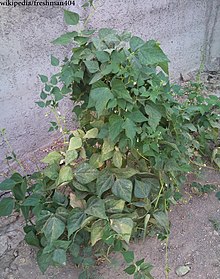**Bean Terminology and History**:
– The term ‘bean’ has a long history in West Germanic languages, initially referring to a variety of pod-borne seeds.
– With the Columbian exchange, the term expanded to include Phaseolus and Vigna seeds, as well as soybeans, peas, coffee beans, and more.
– Beans have been cultivated for thousands of years, with origins in various regions like Afghanistan, Thailand, and Mesoamerica.
– The Fabaceae family includes beans, legumes, lentils, and pulses, offering different varieties with unique adaptabilities.
– Broad beans, chickpeas, and fava beans are examples of beans native to different regions like South Asia and South America.
**Bean Cultivation and Uses**:
– Beans are a summer crop requiring warm temperatures and are capable of nitrogen fixation, reducing the need for fertilizers.
– Different bean varieties mature in 55-60 days and can be eaten fresh or dried, providing protein, fiber, vitamins, and minerals.
– Beans are beneficial for heart health, weight management, and blood sugar control, making them versatile ingredients in various dishes.
– Bush beans have been developed for commercial production, not requiring support while offering nutritional benefits.
– Beans like Green Peas, Mung Bean, and Chickpeas can be included in vegetarian and vegan diets for their nutritional value.
**Nutritional Composition and Health Effects**:
– Beans are rich in nutrients like vitamins (B1, B2, B3, B6, B9) and minerals (calcium, iron, magnesium, potassium), contributing to overall health.
– Some beans contain antinutrients like phytic acid, which can interfere with bone growth and vitamin D metabolism.
– Toxins like phytohaemagglutinin in raw beans, especially red kidney beans, can cause severe symptoms, but cooking for at least 10 minutes can remove toxins.
– Oligosaccharides in beans like navy beans can lead to flatulence due to their digestion process in the large intestine.
– Fermentation can improve bean nutritional value and reduce antinutrients, enhancing their digestibility.
**Toxicity, Risks, and Food Safety**:
– Consumption of certain legumes like fava beans can lead to conditions like favism, while lathyrism is associated with neurological symptoms from specific legumes.
– Natural toxins in food, including phytohaemagglutinin in beans, highlight the importance of food safety measures.
– Lathyrism and phytic acid in cereals have been linked to health issues, emphasizing the need for balanced nutrition.
– Proper handling and preparation of beans, including sprouting and controlling fermentations, are crucial for food safety.
– Understanding the science of cooking beans can help mitigate digestive issues like flatulence associated with their consumption.
**Regulatory, Dietary, and Research Considerations**:
– Organizations like the FDA, WHO, and National Academies monitor natural toxins in food and establish guidelines for nutrient intake.
– Research on beans’ impact on health and nutrition informs dietary recommendations and regulations.
– The Svalbard Global Seed Vault preserves bean seeds for research purposes, contributing to the conservation of genetic diversity.
– Outbreaks of foodborne illnesses related to beans underscore the importance of proper handling and preparation.
– Continued research on beans and their effects on health and nutrition is essential for shaping dietary recommendations and ensuring consumer safety.
A bean is the seed of several plants in the family Fabaceae, which are used as vegetables for human or animal food. They can be cooked in many different ways, including boiling, frying, and baking, and are used in many traditional dishes throughout the world.


